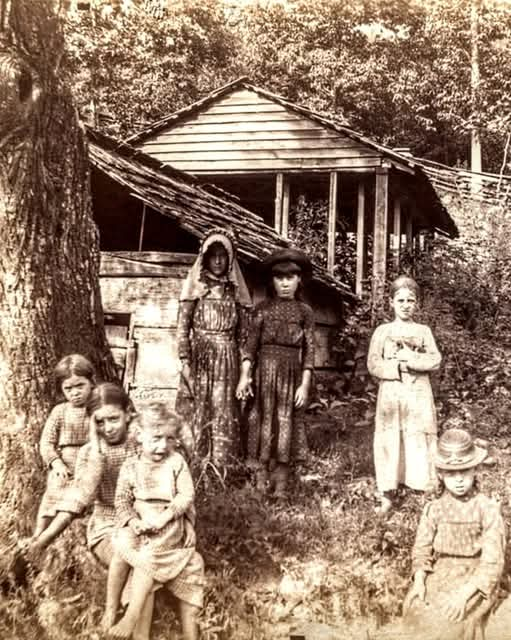The region, with its fertile valleys and abundant orchards, would have been an ideal location for cider production, especially as apples were one of the most widely grown fruits in the area. The cider mill would have been a vital part of the local agricultural economy, and the children, dressed in simple rural clothing, would have played a role in the process, whether by helping to transport apples, gathering the fallen fruit, or assisting with tasks like filling barrels or feeding apples into the mill.

The cider-making process itself was labor-intensive, involving several stages, from picking the apples to pressing them into juice. The cider mill, likely powered by a waterwheel or a hand-operated mechanism, would have been the focal point of activity, with the apples being crushed into pulp before the juice was extracted.
The children would have been fascinated by the equipment, watching as large wooden presses squeezed the pulp and as the fresh cider flowed out, filling barrels or containers for later fermentation. The air around the mill would have been filled with the sweet aroma of apples and freshly pressed cider, and the sound of laughter and chatter would have added to the lively atmosphere of the harvest.
For the children, a visit to the cider mill was not just about helping with the work—it was also a chance to experience the joy of a harvest celebration. Once the cider was made, the families would likely gather together to sample the fresh product, share stories, and enjoy the fruits of their labor.
The cider mill would have been a place where community bonds were strengthened, as neighbors and families worked together, and children learned the value of hard work and cooperation. In 1886, this scene at the cider mill in Blount County was part of a broader rural culture that relied on local craftsmanship, agricultural knowledge, and the shared rhythms of nature to sustain life in the Tennessee foothills.










Leave a Reply